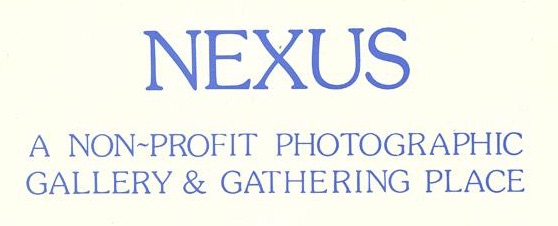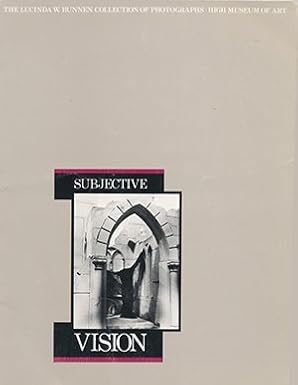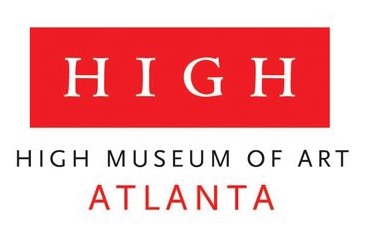 [This is the complete text of the keynote address delivered to a symposium organized in conjunction with the inaugural Chicago Photographic Print Fair, held at Columbia College, Chicago on Friday, September 14, 1990. It has a somewhat convoluted genesis and backstory, which I began recounting in the first installment.
[This is the complete text of the keynote address delivered to a symposium organized in conjunction with the inaugural Chicago Photographic Print Fair, held at Columbia College, Chicago on Friday, September 14, 1990. It has a somewhat convoluted genesis and backstory, which I began recounting in the first installment.
The section below concludes my discussion of the Sam Wagstaff collection of photographs, eventually purchased by the J. Paul Getty Museum, and proceeds to contrast it with the Lucinda Bunnen Collection, donated in 1983 to the High Museum of Art in Atlanta, GA. The High Museum commissioned this part of the essay as the introduction to Subjective Vision, its catalog celebrating the 1983 public debut of selections from that collection.
I have a long-term connection to the High Museum. As I wrote in a previous post,
… In 1974 the newly-formed Atlanta photo cooperative Nexus Gallery, then housed in a storefront, brought me in to teach a workshop in critical writing. They also arranged for me to give a lecture at the High Museum of Art — which, delivered to a packed auditorium whose crowdedness astonished then-director Gudmund Vigtel, set him and that institution off on collecting photography, resulting over the decades in the great collection they have now. …
In short: As a result of my 1974 lecture at the High Museum, Gudmund Vigtel embarked on a substantial expansion of their photo collection, for which he publicly credited me on several occasions. That led to the creation of the Bunnen Collection and its donation to the High Museum, which involved the commissioning of the text below as a contribution to the catalog celebrating that gift.
 And that expansion of the High Museum’s photo collection, in turn, contributed to eventual acquisitions that made the museum’s holdings of photographs — some 8500 at present — its largest collection, thus making the High Museum a world-class repository of photography.
And that expansion of the High Museum’s photo collection, in turn, contributed to eventual acquisitions that made the museum’s holdings of photographs — some 8500 at present — its largest collection, thus making the High Museum a world-class repository of photography.
In its present form, combining my assessments of the Wagstaff Collection and the Bunnen Collection, this article first appeared in print in the March 1991 issue of Camera & Darkroom Photography, and subsequently in the March 1994 issue of the Danish journal Katalog. Click here for Part 1. — A.D.C.]
•
Beyond Wagstaffism:
Building the Photography Collections of the 21st Century (b)
… Creative people may require solitude in which to do their work, but that does not mean that they thrive on neglect — particularly economic neglect. Due to the benighted attitude toward the arts and humanities of recent administrations, governmental support for the arts may well dry up entirely in the next decade.
Corporate support is widely touted as the safety net for the arts; it was assumed (or hoped) that business would step in promptly to take up the slack. Anyone familiar with the problems of corporate fund-raising for the arts knew that this was at best unlikely, especially in the midst of a recession. Furthermore, such economic support as does come from the corporate sector is almost invariably directed toward institutions and organizations rather than individual artists.
Thus the artists themselves are looking more and more to private collectors for sponsorship and patronage. We are entering a period in which such support may make a real contribution not only to the progress and work of individual artists but also to the evolution of the medium as a whole.

Sam Wagstaff, A Book of Photographs (1978), cover
The Wagstaff collection shows that contemporary work, carefully chosen, can be effectively integrated into a primarily historical collection in ways that enrich and amplify both the newer and the older work. As I said before, it’s a pleasure to see a concentration on contemporary work which is provocative, emotional and controversial. It’s also good to see work by photographers who do not yet bear the imprint of major institutional support — particularly that of the Museum of Modern Art. Wagstaff was clearly at odds with MoMA’s stringent, formulaic formalism, and was obviously willing to go his own way. That took particular courage for a collector of his day. With these images, too, I should point out, the collection counterbalances some of the leanings in its holdings of earlier work.
I have cited two aspects of the Wagstaff collection which I see as its most concrete, if minor, contributions. Let me add to that a potential contribution it could have made — one only hinted at in the collection, but never fully realized. One of its major themes, as I’ve noted, is a traditional one: the nude. But the Wagstaff collection is unique in that it includes, and even emphasizes, the male nude. This is a still-controversial and little-explored branch of photography, at least insofar as public presentation is concerned. A major collection centered around this theme, or concentrating specifically on the male nude, would be a survey of enormous value to scholars and to the audience.
By not pursuing his own inclinations in this area further, Wagstaff missed a bet. As the first major private collection of photography to receive widespread public attention and circulation, the Wagstaff collection is in a sense sui generis. Undeniably, it contains a wealth of wonderful images that provide joys both large and small. Yet, because it never evolved further, it will probably prove to be one of the last of its kind — a very young and lonely dinosaur, in other words. And so, publicity value aside, what distinctive function it could serve within the Getty Museum’s archives — and why the Getty paid as much for it as it did — remains a mystery to me.
•
Now let’s turn to the second collection I mentioned, one whose organizational method was diametrically opposed to Wagstaff’s. The Lucinda Bunnen Collection is a prime — and, in several ways, unique — example of the potential inherent in a systematic approach to collecting. Part of its distinction resides in the fact that it was conceived from the outset as an educational tool.
This collection was devised in active relation to the existing collection of a specific public institution, Atlanta’s High Museum of Art, by a group of private citizens — several of them, not coincidentally, practicing photographers, including the donor herself. The methodology by which the imagery was selected and the collection organized — an ongoing, two-year argument among five strongly opinionated people — was no less remarkable. (Ms. Bunnen wrote about that unusual process in her own statement in the exhibition catalogue; I will leave its description to her.)[1]
From a critical standpoint, what I find most provocative is the central theme of the collection — and, of course, the imagery itself.

Subjective Vision: The Lucinda Bunnen Collection (1983), cover
The choice of Clarence John Laughlin as the Bunnen Collection’s core artist strikes me as particularly apt, for reasons both practical and symbolic. Laughlin was then still a living artist, working in New Orleans; the collection’s emphasis is on the work being done in our own time. He was a Southern photographer whose work addresses the history and mythology of that territory; the collection was designed for a Southern museum with a regional constituency and mandate. Laughlin was a polymathic artist whose enormous oeuvre has many aspects and avenues; the collection embraces a diversity of styles, techniques, and attitudes. He was a seminal artist, highly influential but under-recognized; the collection stresses process and inquiry over virtuosity and acclaim. And, though his imagery is emotionally grounded in the unconscious, Laughlin was a thinking photographer whose writing on what he called “the third world of photography” provided the crucial theoretical linchpin for the collection.[2]
Briefly summarized, Laughlin’s position was that beyond those photographic approaches we commonly term documentary and purist there is another, which may take several forms but which treats literal subject matter as raw material and the image as metaphor. If the purpose of the documentarian is transcriptive, that of the purist descriptive, then Laughlin’s could be called transformative: subjective, poetic, romantic, symbolistic, concerned less with seeing than with vision, less with information than with intuition.
For at least the past half-century, this approach has been in disfavor with the photography establishment, whose tastes have leaned toward drier, more formal and/or analytic modes, encouraging the severe restriction of the photographer’s technical options. As a result, the work of Laughlin and others who’ve explored the more openly psychological/emotional approaches and investigated the full range of inherently photographic techniques remains less well known, the tendency they represent less fully examined and discussed in the literature. Despite this neglect, however, that tendency (which is central to photography) endures; those inclined towards it have persevered. That, certainly, was part of the point of this collection.
Given the freewheeling creative atmosphere of current photographic practice, that portion of the audience which has only lately come to photography may have a hard time imagining the outrage and scorn which the pioneering work of such photographers as Laughlin evoked as recently as thirty years ago. Rather than recapitulate that here, I will simply say that such devices, techniques and strategies as the theatrical frame, multiple exposure, image-text integrations, negative printing, and many more which younger artists now take for granted were controversial in earlier times. Those who, like Laughlin, persisted in investigating them paid a price — though those who survive are finally witnessing the vindication of their courageous mappings of those terrains.
 The Laughlin imagery in the Bunnen group, twenty-six prints in all, comprised more than a third of the Bunnen Collection when it entered the High Museum. In conjunction with the Laughlin imagery already in the museum’s possession, it gave the museum an appropriately sizeable representation of one of the major figures in the history of photography in the South. Diverse in style and subject, the Bunnen group’s Laughlins indicated the richness of his total body of work while also offering antecedents for many of the more contemporary images.
The Laughlin imagery in the Bunnen group, twenty-six prints in all, comprised more than a third of the Bunnen Collection when it entered the High Museum. In conjunction with the Laughlin imagery already in the museum’s possession, it gave the museum an appropriately sizeable representation of one of the major figures in the history of photography in the South. Diverse in style and subject, the Bunnen group’s Laughlins indicated the richness of his total body of work while also offering antecedents for many of the more contemporary images.
Thus the staged events of such very different photographers as Cindy Sherman, Arthur Tress, Richard Hill and William Wegman could be seen as connected to Laughlin’s consistent address to the directorial mode in those tableaux vivants he created in the crumbling mansions and cemeteries of the South. Laughlin’s concern with image-text relationships helped to open that door through which Rita DeWitt, Leah Karp, Robert Stewart and Duane Michals subsequently stepped. The embrace of all the technical means at the photographer’s disposal — that rejection of the hamstringing attitudes of purism in Laughlin’s work — is variously echoed and expanded upon by Lucas Samaras, Ken Josephson, Evon Streetman and others who use collage, mixed media, pigment manipulation and hand-applied image components. Laughlin’s alertness to the transient vagaries of light and substance are not unrelated to such otherwise dissimilar works as those of Lisette Model, Ralph Eugene Meatyard, Mario Giacomelli and Jerry Gordon. Finally, Laughlin’s involvement with the South — not so much a naive regionalism as a profound and conscious sense of place — is matched in different ways by Martin Stupich, Leah Karp, Emmet Gowin, and William Eggleston.
The thrust of the Bunnen Collection is not to suggest direct, self-conscious links in either direction between Laughlin and the other photographers represented, but rather to trace an attitudinal kinship which connects Laughlin’s work (including not only his imagery but his stance and his theory) with that which came after. From one perspective, the Bunnen Collection can be seen as presenting the more current work radiating outward from the hub of an earlier, prophetic attitude toward the medium. Looked at in another light, we have a survey of an expansive contemporary attitude revealed retrospectively in its relation to one of its vital progenitors.
There are many connections which can be drawn between the images in this group, but the selection is not strictly programmatic. Though the Laughlin material is germane in one way or another to virtually all the newer work, there are differences no less noteworthy than the similarities. For instance, there is in the Bunnen Collection a recurrence of the theme of self-portraiture: Judy Dater, Duane Michals, Chuck Close, Lucas Samaras, Elizabeth Turk, W. Eugene Smith, Cindy Sherman are all represented by works that demand consideration within that mode. Yet, though Laughlin made self-portraits, they were not a central theme of his; none are in the Bunnen group. The introspection characteristic of much of his imagery may be only another form of the self-scrutiny which manifests itself in the act of self-portraiture, but the use of the self-portrait as a vehicle for extended exploration is a decidedly recent phenomenon.
•
Though the Bunnen Collection in its present form stands as a self-contained entity, it resides — as it was intended to — within the larger collection of the High Museum. Its presence there cannot help but result in interaction with other material in the museum’s holdings. The museum’s existing collection, initiated under the direction of Gudmund Vigtel, was built over the past two decades. Though its emphasis is on the classic and traditional, it includes a range of material whose richness was automatically amplified by the arrival of the Bunnen Collection.
 In addition to the already-mentioned Laughlin material, the museum also held work by several others in the Bunnen group. Beyond those evident connections, there was other work already there — by such artists as Diane Arbus, Scott Hyde, André Kertész, Anne Brigman, Manuel Alvarez Bravo, John McWilliams, Paul Kwilecki, to name only a few — which bears directly on the issues raised by the Bunnen material. Thus the potential for the Bunnen Collection’s future as an aspect of the High Museum’s service to the scholarly community and the general public includes not only the possible expansion of the Bunnen Collection as such but its function as a probe with which to examine and refine the institution’s larger relationship to photography.
In addition to the already-mentioned Laughlin material, the museum also held work by several others in the Bunnen group. Beyond those evident connections, there was other work already there — by such artists as Diane Arbus, Scott Hyde, André Kertész, Anne Brigman, Manuel Alvarez Bravo, John McWilliams, Paul Kwilecki, to name only a few — which bears directly on the issues raised by the Bunnen material. Thus the potential for the Bunnen Collection’s future as an aspect of the High Museum’s service to the scholarly community and the general public includes not only the possible expansion of the Bunnen Collection as such but its function as a probe with which to examine and refine the institution’s larger relationship to photography.
To build such a collection with a particular institution in mind as its eventual home, as did Bunnen and her cohorts, is to accept a dual challenge: the imperative of creating something that can stand as a self-contained entity, yet also make sense within — and help to make sense of — the larger environment of its intended repository. The Lucinda Bunnen Collection is, I think, an important experiment along those lines. It will be instructive to observe its growth and its impact on the development of the High Museum’s collection as a whole — as well as on the regional audience’s perceptions of the medium.
To which of these poles — the Wagstaffian or the Bunnenist — should present-day collectors gravitate? In concluding this talk, I can only reiterate my conviction that the major public and private collections of the future will be those which approach the medium systematically rather than eclectically. They may scrutinize a specific theme, genre or mode; they may survey the work of an individual or group, an era or region; they may focus on a working method, or even a particular material. But I believe that an increasingly sophisticated audience will begin searching out and paying respect to those collections whose coherent structures organize the medium’s imagery in diverse and meaningful ways.
The field of photography collecting is still new enough that there are no hard and fast rules. At the same time, precisely because it is a relatively uncharted area, the dedicated and thoughtful collector in photography today is in a position to make a valuable contribution to our understanding of the medium, by helping us to see more clearly where it has come from and where it may be going.
( Part 1 I 2)
[1] “Foreword,” Subjective Vision: The Lucinda W. Bunnen Collection of Photographs (Atlanta: High Museum of Art, 1983), p. 5.
[2] Clarence John Laughlin, “An Introduction to the Third World of Photography,” in Edward Weston and Clarence John Laughlin (New Orleans: New Orleans Museum of Art, 1982).
•
•

Special offer: If you want me to either continue pursuing a particular subject or give you a break and (for one post) write on a topic — my choice — other than the current main story, make a donation of $50 via the PayPal widget below, indicating your preference in a note accompanying your donation. I’ll credit you as that new post’s sponsor, and link to a website of your choosing.
And, as a bonus, I’ll send you a signed copy of my new book, poetic license / poetic justice — published under my full name, Allan Douglass Coleman, which I use for my creative writing.



